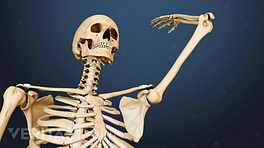Arthritis is the most common cause of low back pain, especially in people over age 50. The low back contains five sets of facet joints, one on the left and one on the right side of each spinal bone. Like joints in any other part of the body the low back facet joints can be injured, or become inflamed.
See Lumbar Spine Anatomy and Pain
Video: Lumbar Osteoarthritis
Lumbar osteoarthritis is a form of degenerative arthritis in the low back that causes pain, stiffness, and inflammation. Watch Now
This article provides a full review of the cause of spinal arthritis, its symptoms, as well as how to get an accurate diagnosis.
Quick Definition of Spinal Arthritis
The word arthritis comes from a combination of the Greek "arthros," meaning a joint and "-itis," meaning inflammation. The facets are the only joints in the spine. Spinal arthritis therefore means inflammation of the spinal facet joints.
Watch: Facet Joint Anatomy Animation
Causes of Arthritis in the Lower Back

Osteoarthritis
(larger view)
Arthritis of the spine usually occurs due to internal damage to the facet joints. The surfaces of the facet joints are lined with smooth cartilage to allow for movement as the two sides of the joint rub against one another. However, the joint can become painful through the following process:
- The cartilage on one side of the facet joint gets damaged. Every time the spine moves the injured cartilage rubs against its neighbor, causing friction and further injury to both sides.
- The joint damage and friction leads to inflammation.
- The swollen facet joints transmit this pain signal through a single nerve (the medial branch) that travels through the facet joint.
- This signal then causes the back muscles to go into spasm.
- The combination of the muscle spasm and inflammation of the joints causes low back pain.
See Treatment Options for Facet Joint Disorders
The spinal facet joints in the lower back are prone to developing osteoarthritis. The joints are quite small compared to the amount of body weight they bear. The resulting stress and strain makes them susceptible to damage to the cartilage, and injury. The accumulation of injuries over a lifetime causes the joints to break down, or degenerate.
See Facet Joint Osteoarthritis
Facet joint breakdown also comes as a result of torn discs. Discs act as shock absorbers for the spine. They have a tough outer part, and a soft inner part. The soft inner part absorbs the shock. But the hard outer part can tear due to degeneration or even injury. The torn discs don’t absorb stress and strain very well, which leads to excessive force being transmitted to the facet joints.
The degenerative process is similar to what happens in a car. If the shocks go out and aren’t replaced, the next thing that happens is the springs break. In the lower back, once the torn disc stops absorbing the stresses and strain of everyday life, the facet joints go out next. Once the facet joints are injured they become inflamed, swell, cause muscle spasm, and the back pain cycle begins.








